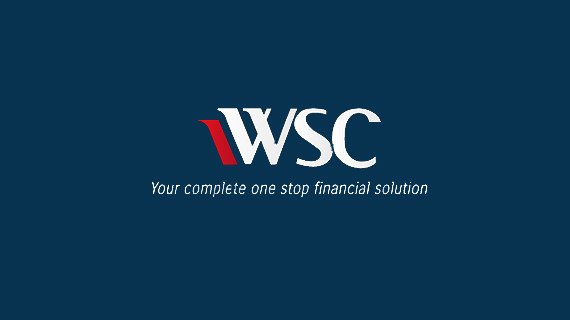Economic and market overview
- Share markets made solid progress in the final month of the FY23 year. The MSCI World Index added 5.7% in June, extending gains to more than 18% over the past 12 months. Currency movements diluted performance for Australian investors over the month, but lifted rolling annual returns to more than 23%.
- Australian shares fared well in June too. The S&P/ASX 200 Index returned 1.8% over the month, but was little changed in the FY23 year as a whole.
- With inflation remaining well above target in key regions, investors continued to price in the likelihood of further increases in interest rates
- This exerted further upward pressure on bond yields and resulted in negative returns from fixed income.
US: There were upward revisions to GDP data for the March quarter; economic growth was upgraded to 2.0% for the first three months of 2023, up from an initial estimate of 1.3%.
The labour market in the US goes from strength to strength. Nearly 340,000 new jobs were added in the month of May, which was almost double the consensus forecast. For now, US firms seem confident enough in the outlook to keep hiring new staff.
- Wages are rising at an annual pace of more than 4%, which is feeding through to inflation. The ‘Core’ measure of CPI favoured by central bank policymakers – which strips out food and energy prices – is still showing annual increases of more than 5%.
- The Federal Reserve left interest rates unchanged in June, but one further quarter percentage point increase continues to be priced into the market.
- Policymakers are still trying to get inflation under control and Jerome Powell, Chair of the Federal Reserve, has indicated that two or three additional rate hikes might be necessary.
More importantly, there remains a focus on the likely peak level of interest rates in this cycle and when borrowing costs might start to come down again. Investors currently believe the Federal Funds rate could be lowered in early 2024. Forecasts currently indicate official cash rates in the US could fall by as much as 1% during the course of next year.
Australia: The Reserve Bank of Australia surprised the market by raising official cash rates by a quarter of a percentage point in early June, to 4.10%.
- Policymakers remain concerned about high inflation and the outlook for consumer prices. Headline inflation moderated to an annual rate of 5.6% in May, but remains well above the target.
- Employment trends have been resilient, despite higher borrowing costs for firms. More than 75,000 new jobs were created in May – more than four times the consensus forecast
- and the unemployment rate fell to 3.6%. For the first time, the number of people employed in Australia rose above 14 million.
- The tight labour market continues to translate into wage pressures. Some employers are even having to offer signing-on bonuses to entice new workers.
The concern for policymakers is that these influences keep inflation elevated for a prolonged period, preventing CPI from falling back within the 2% to 3% target range.
Australian equities
- The unexpected interest rate hike took the market by surprise, eroding optimism slightly and prompting investors to reconsider their forward-looking corporate earnings forecasts.
- The local share market still registered solid gains, however, as investors focused on long-term growth opportunities. The S&P/ASX 200 Accumulation Index added 1.8%.
- Sentiment was supported by stronger bulk commodity prices and lower-than-expected local inflation.
- The outlook for bulk commodities improved during the month, given reports that China may be preparing policy changes and fiscal stimulus plans to support demand. Such measures could increase activity levels in the construction and infrastructure sectors, in turn lifting demand for iron ore and coking coal, in particular. Stocks in the Materials added 4.8% against this background. Iron ore prices rose 10.0% over the month, rising back above the USD$100/tonne level. This boosted mining stocks including Fortescue Metals Group (+15.4%), Rio Tinto (+7.2%) and BHP Group (+7.1%).
- The IT sector (+3.5%) continued its recent strong run on the back of favourable performances from Xero (+8.2%), WiseTech Global (+6.7%) and Megaport (+5.9%). The sector has risen by more than 35% over the past 12 months, consistent with strong moves in technology-related stocks overseas.
- Health Care stocks Imugene (-17.3%), CSL (-9.5%) and Cochlear (-5.9%) all struggled and dragged the sector 6.6% lower. Index heavyweight CSL was the greatest detractor, losing ground after the management team announced that full year net profits will be adversely affected by stronger-than-expected foreign exchange headwinds. Profit guidance for 2024 also fell short of market expectations.
- The Communication Services sector also underperformed. TPG Telecom was the biggest laggard in this area of the market, falling 11.0% after the Australian Competition Tribunal rejected the company’s regional network sharing proposal with Telstra.
- Small companies underperformed their larger counterparts, with the S&P/ASX Small Ordinaries Index returning 0.0% over the month.
- Unlike in the large cap space, Small Materials stocks struggled the most. Lake Resources (-43.4%) and Jervois Global (-21.4%) fared particularly poorly, following underwhelming trading updates.
Global equities
- All major share markets worldwide made positive progress in June. Generally encouraging company profits in Europe provided a tailwind and diverted the focus away from the likelihood of further increases in interest rates in key regions.
- Favourable returns in the US set the tone for other major markets. The S&P 500 Index added 6.6% over the month.
- Gains in June rounded off a strong first half of the year for equities. The MSCI World Index returned more than 15% during the period.
- Technology shares fared particularly well, partly owing to enthusiasm over the prospects for Artificial Intelligence applications. The NASDAQ Index in the US returned more than 32% over the six months; the strongest performance in the first six months of a calendar year for 40 years.
- The Nikkei 225 Index in Japan has also been a standout performer recently, adding 7.5% in June and more than 28% in the calendar year to date.
- As well as delivering favourable returns for investors, major share markets have been rising fairly consistently since midMarch. In fact, the VIX – which measures expected volatility in the S&P 500 Index in the US – has fallen to its lowest level since before the Covid shock, more than three years ago
Against this backdrop, investors are expecting at least one more interest rate hike in the months ahead; and more likely two.
New Zealand: GDP growth for the March quarter was -0.1%, meaning the country has entered a recession following a negative reading in the final three months of 2022.
- The Reserve Bank of New Zealand has done more than any other central bank to combat inflation in the past year and a half or so, raising official cash rates by 5.25%, to 5.5%. This level of policy tightening has unsurprisingly trickled through to the real economy, eroding confidence and activity levels.
Policymakers now seem willing to pause the interest rate-hiking cycle to see how the economy and inflation respond to the aggressive policy tightening that has already occurred.
Europe: There was some encouraging news in Europe, with inflation falling to 6.1%. While still high, this is the lowest level since Russia invaded Ukraine nearly 18 months ago and suggests interest rate hikes by the European Central Bank are starting to have their desired impact.
- Less positively, Germany – the largest economy in the Eurozone – is already in recession and activity levels in the manufacturing sector continue to worsen. In fact June saw the biggest monthly contraction in Europe-wide manufacturing output for more than three years.
- Economic indicators are starting to roll over in other major European economies too. In France, for example, an influential gauge of activity levels in the services sector has fallen to its lowest level since early 2021.
- At 8.7% year-on-year, inflation in the UK was unchanged in the month of May. Food prices continue to rise particularly quickly and are exerting upward pressure on the overall inflation basket.
The Bank of England responded by raising UK interest rates by half a percentage point, to 5.0%. Consumer confidence remains subdued, particularly as house prices are falling and as further rate hikes are anticipated. Consensus forecasts now indicate official cash rates will rise above 6% in the UK, as officials continue their battle with inflation.
Asia/EM: Central bank officials continued to talk up prospects for the Chinese economy, but stopped short of announcing any fresh stimulus measures. The economy has shown signs of weakness recently, with subdued consumer spending and sluggish new home sales.
- The Chinese yuan continued its slide against the US dollar and other major currencies, which prompted the Chinese central bank to intervene and support the currency.
- In Eastern Europe, the war in Ukraine took a potentially interesting turn, with rumours of a mutiny among Russian troops. The Wagner Group, a private military force funded by the Kremlin and fighting on Russia’s behalf in Ukraine, allegedly turned its troops around and marched towards Moscow.
- Calm appeared to have been restored by month end, although political commentators suggested the development highlighted the fragility of Vladimir Putin’s leadership in Russia. This could have implications for the war in Ukraine in the months ahead. Australian dollar
- The latest interest rate hike boosted the Australian dollar.
- The currency closed the month up 2.5% against the US dollar, 6.1% against the Japanese yen, and 3.1% against a tradeweighted basket of other international currencies.
- This suggests investors are not anticipating any major weakness in the US share market in the foreseeable future.
Listed property
- Global property securities fared reasonably well in June. The FTSE EPRA/NAREIT Developed Index added 2.8% in AUD terms, modestly underperforming wider equity markets.
- Germany and France were among the best performing markets. In fact Germany was the strongest performer worldwide; investor sentiment improved in the residential sector in particular, despite ongoing economic weakness in the country and an uncertain outlook for Europe’s largest economy.
- US-based property stocks also performed well, despite suggestions by the Federal Reserve that interest rates are likely to be raised further in the months ahead. For now, demand metrics are holding up quite well and are supporting the earnings outlook for US REITs.
- Laggards included Hong Kong and Singapore.
- The UK property sector also struggled over the month, as increases in the cost of debt exerted downward pressure on real estate valuations.
- A-REITs were little changed, underperforming overseas peers as well as the broader Australian share market.
Global and Australian Fixed Income
- The persistence of inflation and an increasing likelihood that interest rates will need to be raised further pushed bond yields higher in most major regions.
- Benchmark 10-year government bond yields rose between 0.10% and 0.20% in the US, UK and Germany, as further rate hikes were priced in. These moves resulted in negative returns from global bond indices.
- As well as rising higher than previously anticipated, interest rates seem likely to remain elevated for an extended period. These expectations are exerting particular pressure on yields on shorter-dated securities and resulting in curve inversions in some markets (whereby yields on short-dated bonds rise above those on longer-dated securities). This is important for investment markets, as curve inversions have historically been good indicators of impending economic recessions.
With that in mind, it was a little disconcerting to see yields on 3- year Australian Commonwealth Government Bonds rise above those on comparable 10-year securities. A curve inversion has not occurred in Australia since 2008, prior to the Global Financial Crisis. Ten-year yields in Australia rose 0.42% over the month, breaking through the 4% level for the first time since January. This hindered returns from the local bond market.
Global credit
A general ‘risk on’ tone in global markets enabled credit spreads to narrow in June, which supported positive returns from credit.
- Economic data remains reasonably supportive and corporate default rates have not yet risen materially. That said, an increase in defaults from very low levels is anticipated and will be important for credit investors to monitor in the months ahead.
- With inflation remaining sticky in nature in most key regions, it seems likely that interest rates will remain elevated for a prolonged period. This prospect does not appear to have been fully reflected in credit valuations and there could be some market volatility as investors consider the impact of a ‘higher for longer’ interest rate backdrop.
- Any bouts of volatility in credit markets could be exacerbated by the summer holiday season in the northern hemisphere. Trading volumes in credit markets typically moderate at this time of year, resulting in thinner market liquidity and, at times, some meaningful price swings. This kind of market environment can provide opportunities for active credit investors to exploit.













